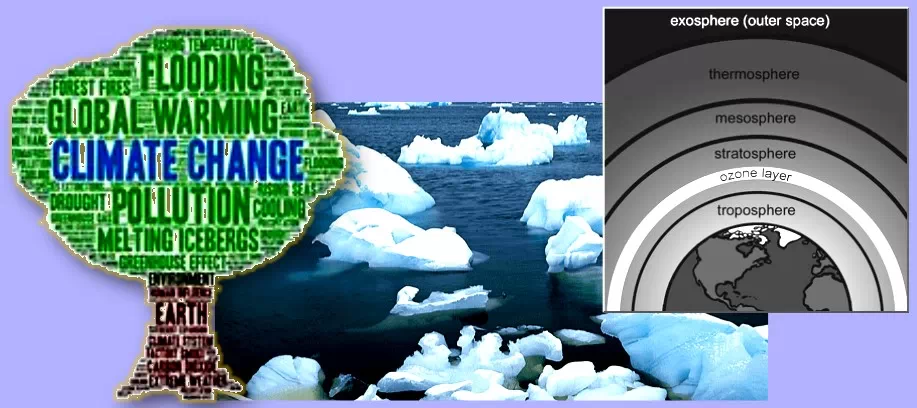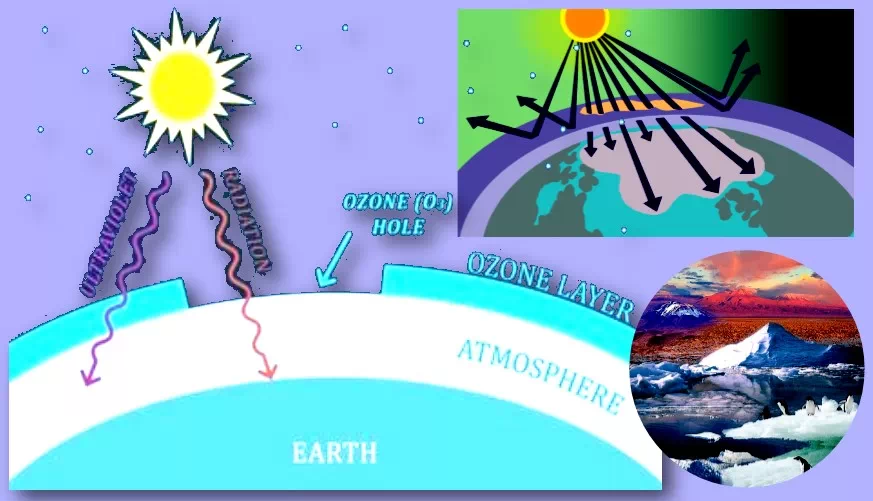In the coming centuries, a 23-foot water surge in sea level is predicted because of global warming.
As a result, some prominent coastal cities like New York and South Florida are expected to disappear from the world map.
What is global warming?
Global warming is none other than climate change happens because of global heating.
It is a gradual increase in the average temperature of the earth’s atmosphere caused by the greenhouse effect.
What is Greenhouse Effect?
The warming-up of the earth’s surface due to the trapping of solar radiation in the lower atmosphere. It would otherwise be reflected back into space.
It happens mainly by carbon dioxide, chlorofluorocarbons, natural methane emissions, and other greenhouse gases.
The increase in carbon dioxide (CO2) and other greenhouse gases increases the risk of global warming.

What are greenhouse gases?
The atmospheric gases such as water vapor, carbon dioxide, ozone, methane, nitrous oxide, and others are called greenhouse gases. They hold light and heat and support life on earth just like a greenhouse does for plants.
90% of sun’s energy or solar radiation is absorbed by the greenhouse gases. This absorbed energy is sent back to the earth’s surface to warm up it.
Though these gases are essential to life, their balance in atmosphere is to be kept at a point. Otherwise it leads to global warming as said above.
The radiation trapped during global warming is difficult to escape and lies in the form of long-wave radiation.
Another reason for greenhouse effect is the increased levels of carbon dioxide, CFCs, and other pollutants.
The atmospheric gases allow sunshine to pass through but absorb heat that is radiated back from the warmed surface of the earth.

The main causes for the increase of greenhouse gases in the atmosphere:
- The burning of fossil fuels together with the release of other gases such as chlorofluorocarbons.
- Deforestation.
What happens to waters on earth as a result of global warming in the future?
The main ill-effects of the global warming are:
1. Climatic changes
It is observed that heat exchange has increased about 2.3 watts per square meter since 1750 mainly because of human activity. It can be said as an extraordinary climate change.
Sea water temperature as well as humidity in the atmosphere gets increased.
2. Polar Regions getting shrunk
The ice at Polar Regions is getting melted due to global warming. This shrinks snow packs and ice at the Poles.
This leads to the increase in sea water levels to abnormal levels.
As a result, some great coastal cities would become the ‘Lost Cities’ in future.
3. Failing of Ozone layer
It gets thinned and leads to the formation of ozone hole.

What is Ozone Layer?
It is a layer in earth’s stratosphere (the region at a height of about 10 km). It contains a high concentration of a bluish gas called ozone. It is created by the ultraviolet rays of the sun.
An ozone molecule falls apart when it is struck by an ultraviolet ray. The free oxygen generated is spread like a layer when it combines with another free oxygen.
Ozone is constituted only by about one-millionth of the atmospheric gases. Ozone absorbs most of the most of the sun’s ultraviolet rays.
Otherwise these rays would destroy all life on the earth.

Breach of ozone layer: Formation of ozone hole:
Some harmful chemicals like chlorofluorocarbons (CFCs) reduces the amount of ozone in the stratosphere. The thinning of ozone layer is called the ozone hole.
These CFCs are found largely in refrigerants and aerosol sprays.
Ozone holes usually form at poles.
From 1980 to 1990, there found a dramatic increase in size of the Antarctic ozone hole. But it has stabilized now.
At Arctic region a smaller hole is getting developed in recent years.
Water crisis on earth:
1. Drinking water threatened
Fresh water supply cannot meet with demand. It is estimated that about 30% decline in fresh water since 1970 resulting in less than one percent of the availability of drinking water for humans.
2. Uneven Distribution of Fresh Water
Due to diversion rivers are getting dried. Ground waters are not getting replenished because they are being drained beyond their capacity. Almost 30% of the world population lack enough water for their use. The United Nations warns that by 2025 more than half of the population suffer from water shortage for their basic needs.
3. Unfit water rings the death bells
Day by day water is getting unfit because of various types of pollution, mostly chemical and microbial.
Up to 1500 children happen to die every day by drinking polluted water.

4. Plastic Soup of seas and oceans
Seas and oceans are covered with plastic soup of waste. This plastic soup is delivered from land, ships, and oil platforms. It travels in a vortex form just below the sea surface.
It is estimated by United Nations that an average of 46,000 plastic pieces are floating per every square mile.
5. Alarming threat of oil spills
Oil spills from oil tankers pose a challenging threat to clean up. It is very essential to determine the nature of the spill and sites that are in immediate danger along the coastline. It is imminent to make the oil spill less harmful.


